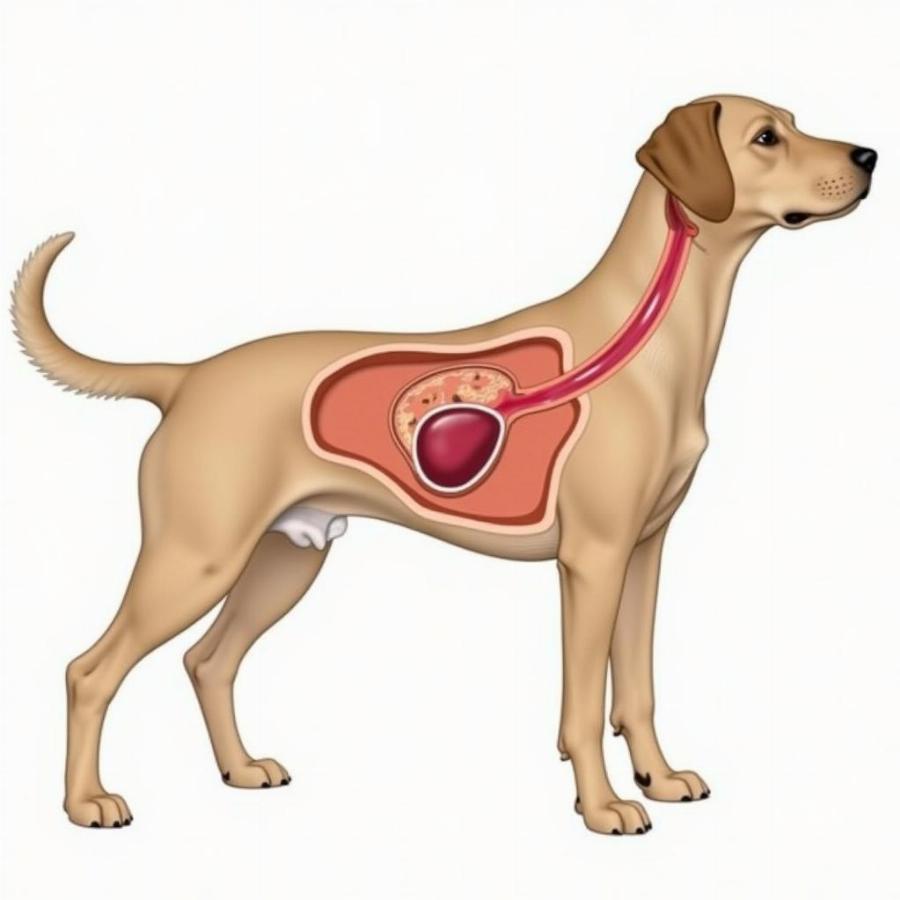Urinary tract infections (UTIs) are a common problem in dogs, and knowing how to tell if your dog has a UTI is crucial for their well-being. If left untreated, a UTI can lead to more serious health issues. This comprehensive guide will help you understand the signs and symptoms of UTIs in dogs, so you can seek timely veterinary care.
Recognizing the Signs of a UTI in Your Dog
It can be challenging to pinpoint a UTI in your furry friend, as dogs can’t tell us what’s bothering them. However, there are several key signs you can look out for. These include frequent urination, straining to urinate, accidents in the house (especially if your dog is house-trained), blood in the urine, licking the genital area excessively, cloudy or foul-smelling urine, and lethargy or loss of appetite.
If you notice any of these symptoms, it’s essential to consult a veterinarian. Don’t try to self-diagnose or treat your dog, as this can worsen the condition.
Common Causes of UTIs in Dogs
Several factors can contribute to UTIs in dogs. These include bacteria entering the urinary tract, bladder stones, anatomical abnormalities, weakened immune systems, and certain medical conditions like diabetes. Female dogs are also more prone to UTIs than males due to their shorter urethra.
 Cấu tạo hệ tiểu của chó
Cấu tạo hệ tiểu của chó
Understanding these potential causes can help you take preventative measures, such as ensuring your dog has access to fresh water and encouraging regular potty breaks.
Diagnosing and Treating UTIs in Canines
A veterinarian will typically diagnose a UTI through a urinalysis, which examines the urine for bacteria, blood cells, and other abnormalities. They may also perform a urine culture to identify the specific bacteria causing the infection and determine the most effective antibiotic. In some cases, further diagnostic tests like X-rays or ultrasound may be necessary to rule out underlying conditions. Treatment usually involves a course of antibiotics, and your veterinarian may also recommend pain medication or other supportive care.
Preventing UTIs: Keeping Your Dog Healthy
While not all UTIs are preventable, there are steps you can take to reduce the risk for your canine companion. These include ensuring your dog has access to plenty of fresh water to dilute their urine and flush out bacteria, encouraging regular potty breaks to prevent bacteria from building up in the bladder, maintaining good hygiene around the genital area, and feeding a balanced diet to support a healthy immune system.
When Should You Call Your Vet?
If you suspect your dog has a UTI, don’t hesitate to contact your veterinarian. Early diagnosis and treatment are crucial for preventing complications. Don’t wait to see if the symptoms improve on their own, as this can lead to more severe health issues.
My dog is urinating more frequently. Is this a UTI?
Frequent urination can be a sign of a UTI, but it can also be caused by other conditions. It’s best to consult a vet for a proper diagnosis.
How is a UTI treated in dogs?
UTIs in dogs are typically treated with a course of antibiotics prescribed by a veterinarian.
Can I give my dog human antibiotics for a UTI?
No, never give your dog human medication without consulting a veterinarian. Human medications can be toxic to dogs and may not be effective in treating their condition.
My dog keeps licking their genital area. Could this be a sign of a UTI?
Excessive licking of the genital area can be a sign of a UTI or other issues. Consult your vet to determine the cause.
What are the long-term effects of untreated UTIs in dogs?
Untreated UTIs can lead to kidney infections, bladder stones, and other serious health problems.
Beyond UTIs: Other Urinary Problems in Dogs
While UTIs are common, other urinary problems can affect dogs. These include bladder stones, urinary incontinence, bladder cancer, and kidney disease. Regular veterinary check-ups are crucial for early detection and treatment of these conditions.
Conclusion
Knowing how to tell if your dog has a UTI is vital for their health and well-being. By being aware of the signs and symptoms, you can seek prompt veterinary care and ensure your furry friend receives the appropriate treatment. Regular preventative measures and open communication with your veterinarian are key to maintaining your dog’s urinary health.
FAQ
-
What are the most common signs of a UTI in dogs? Frequent urination, straining to urinate, accidents in the house, blood in the urine, licking the genital area excessively, cloudy or foul-smelling urine, lethargy, and loss of appetite.
-
How is a UTI diagnosed in dogs? A veterinarian will typically diagnose a UTI through a urinalysis and sometimes a urine culture.
-
How are UTIs treated in dogs? Treatment usually involves a course of antibiotics prescribed by a veterinarian.
-
Can I prevent my dog from getting a UTI? While not all UTIs are preventable, you can reduce the risk by ensuring your dog has access to fresh water, encouraging regular potty breaks, and maintaining good hygiene.
-
What should I do if I suspect my dog has a UTI? Contact your veterinarian immediately for diagnosis and treatment.
-
Are female dogs more prone to UTIs? Yes, female dogs are more susceptible to UTIs due to their shorter urethra.
-
Can UTIs be serious if left untreated? Yes, untreated UTIs can lead to kidney infections, bladder stones, and other serious complications.
More questions? Check out these related articles:
types of shepherd dog breeds
dogs with curly tails and floppy ears
Beaut Dogs is your trusted source for all things related to dog care. We provide expert advice and valuable resources to help you navigate the wonderful world of dog ownership. When you need support, don’t hesitate to reach out. Email us at [email protected], and the Beaut Dogs team will be happy to provide detailed and accurate answers to your questions. Visit us at https://beautdogs.com!